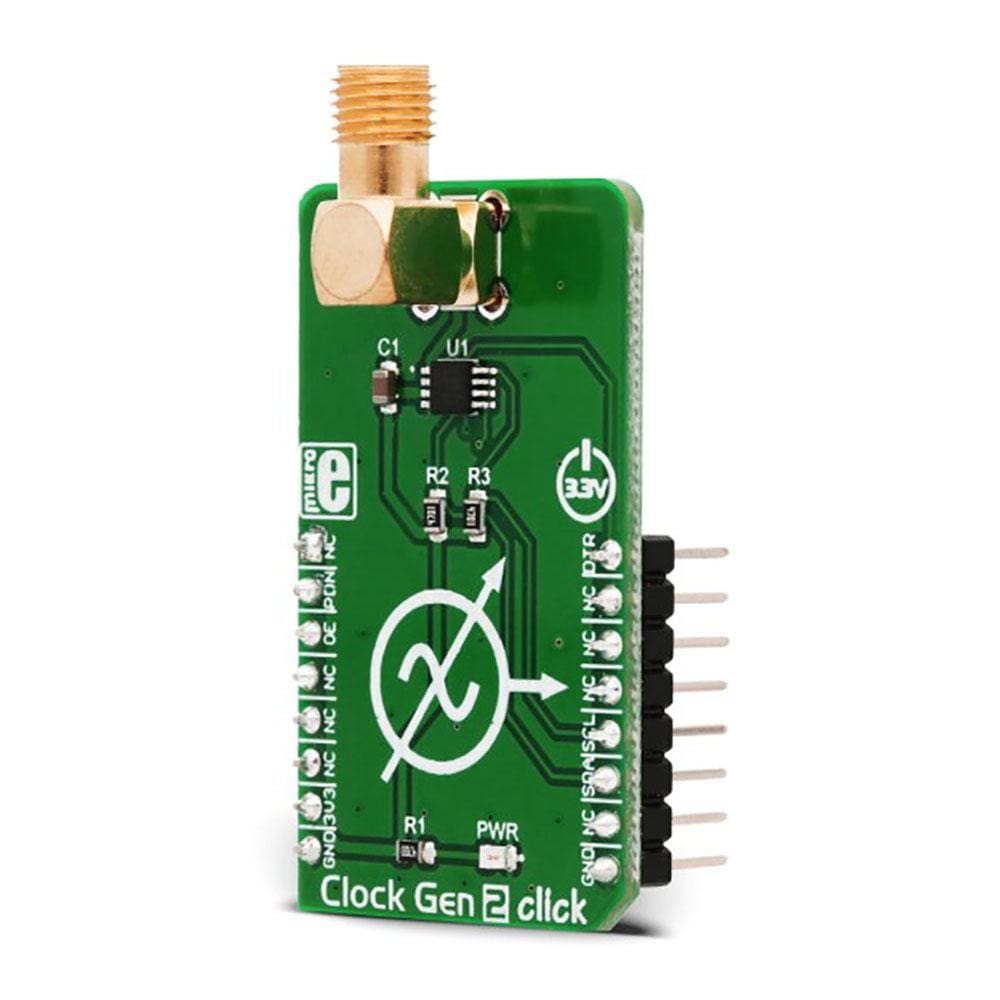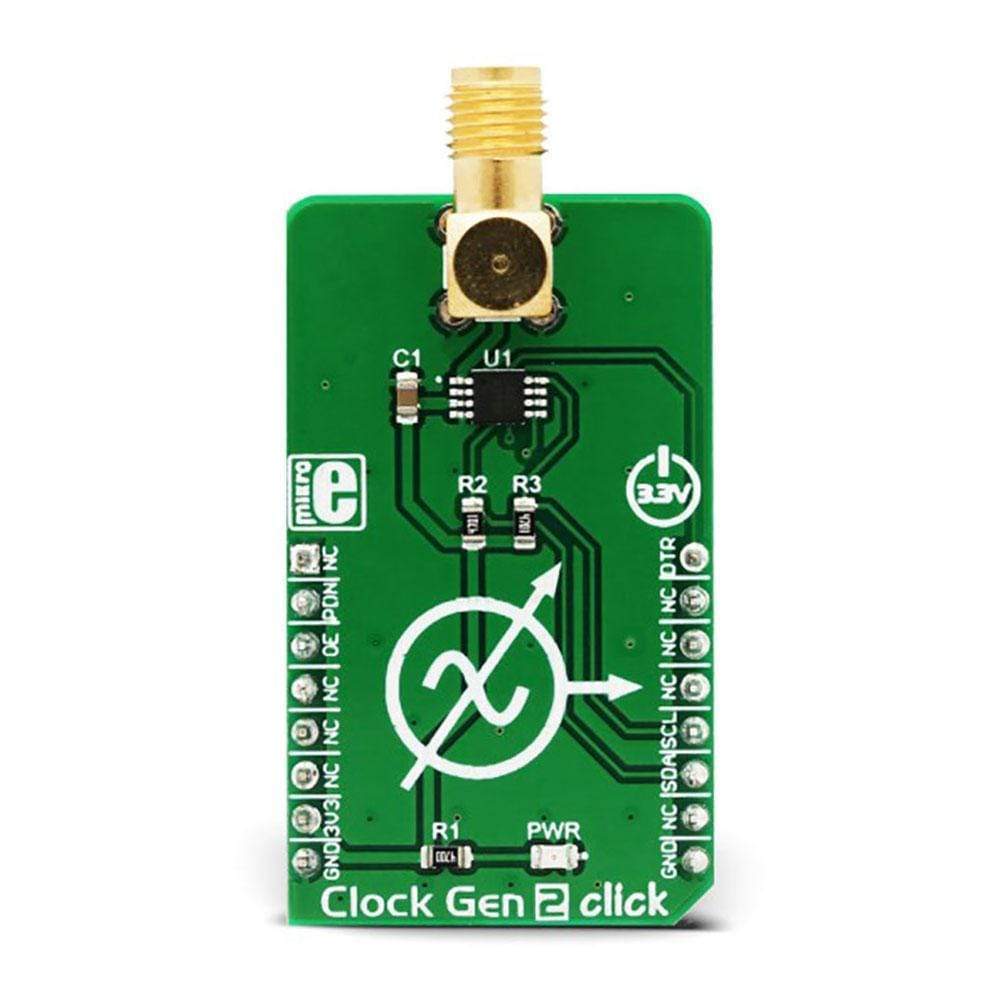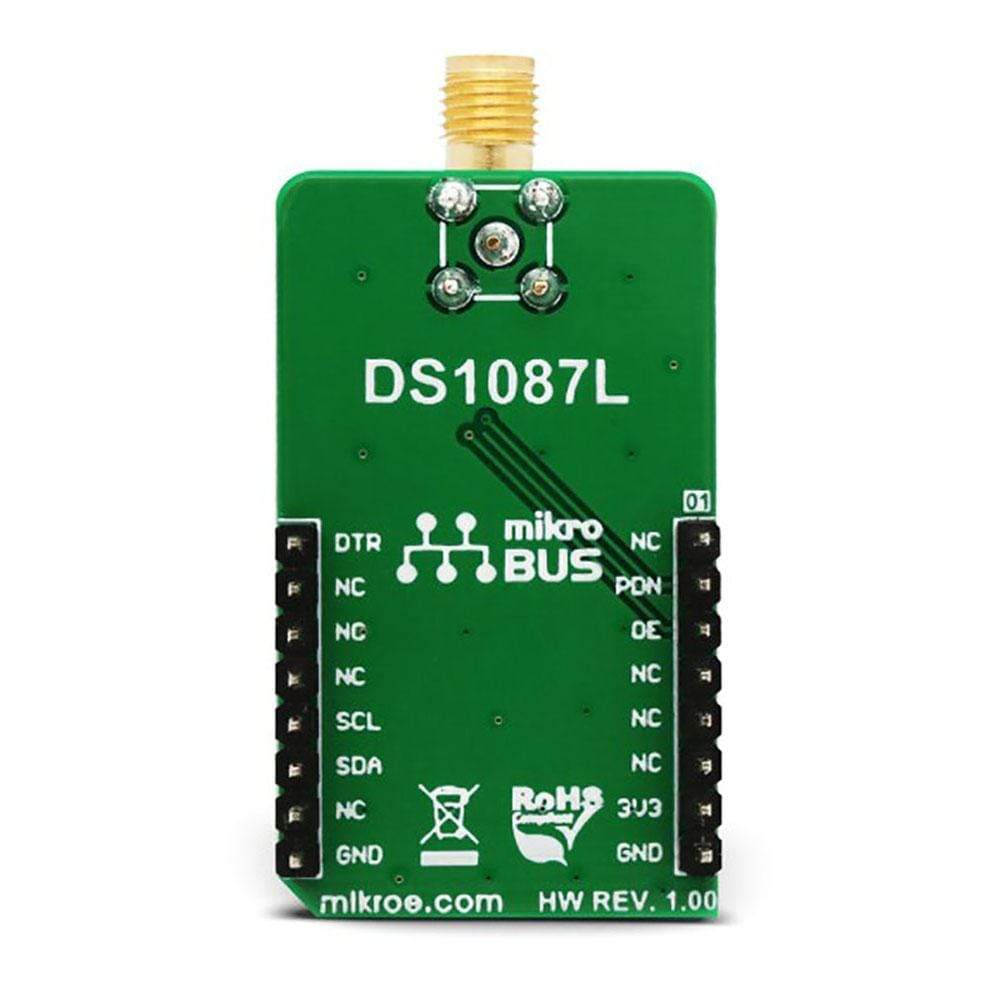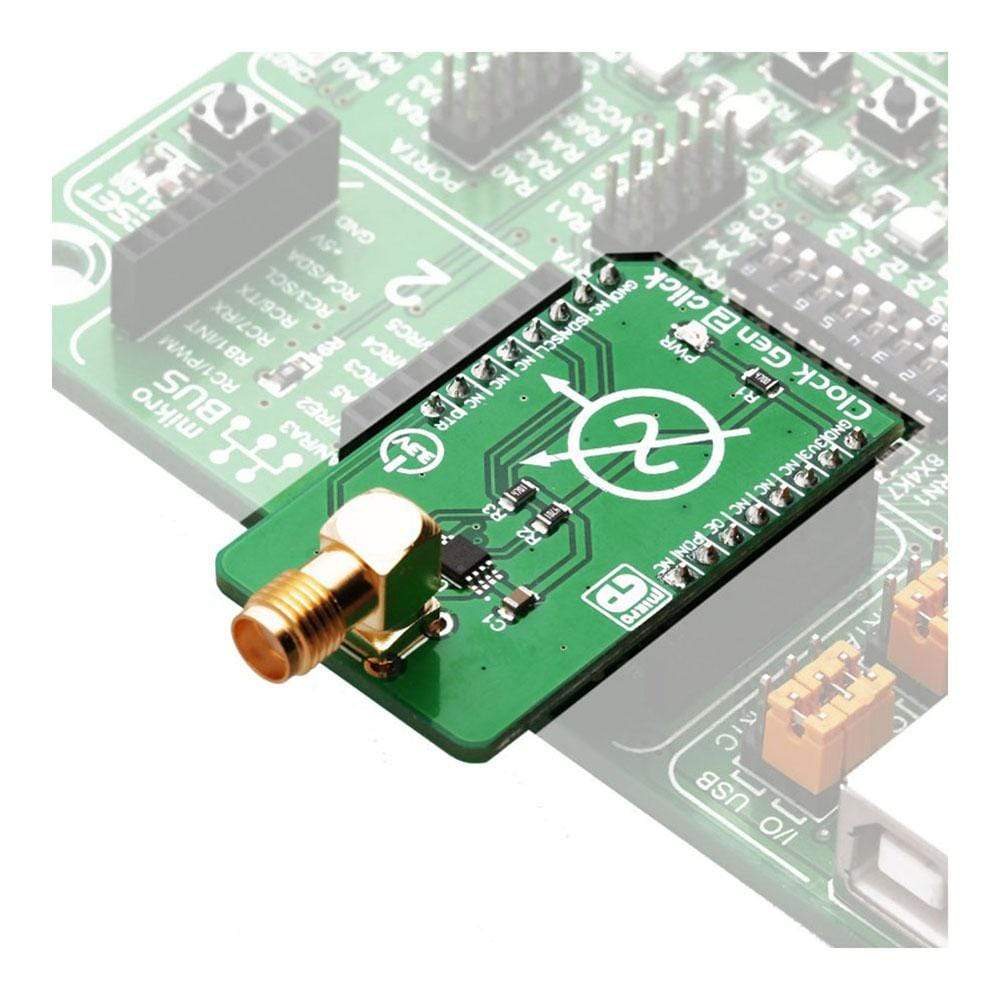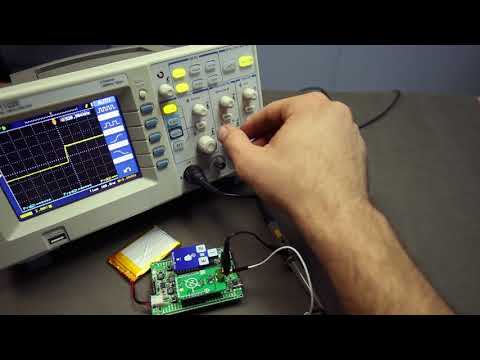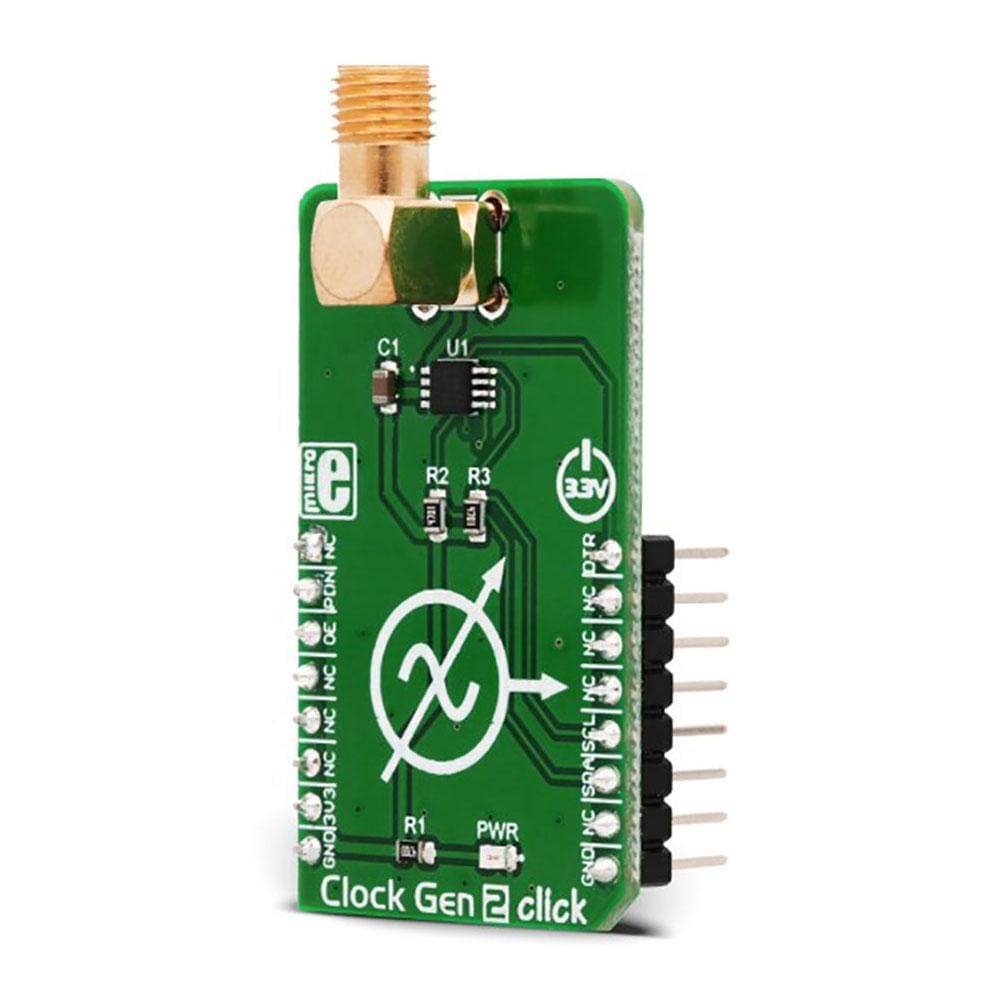
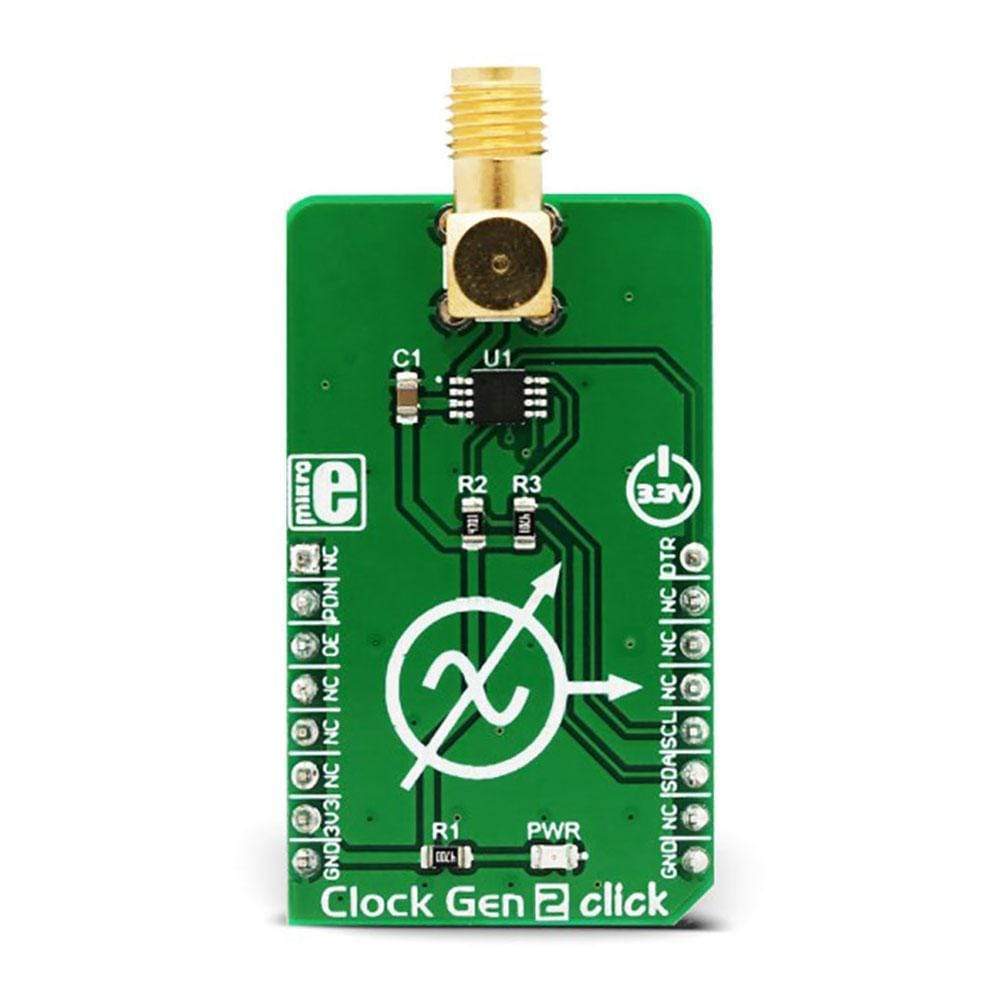
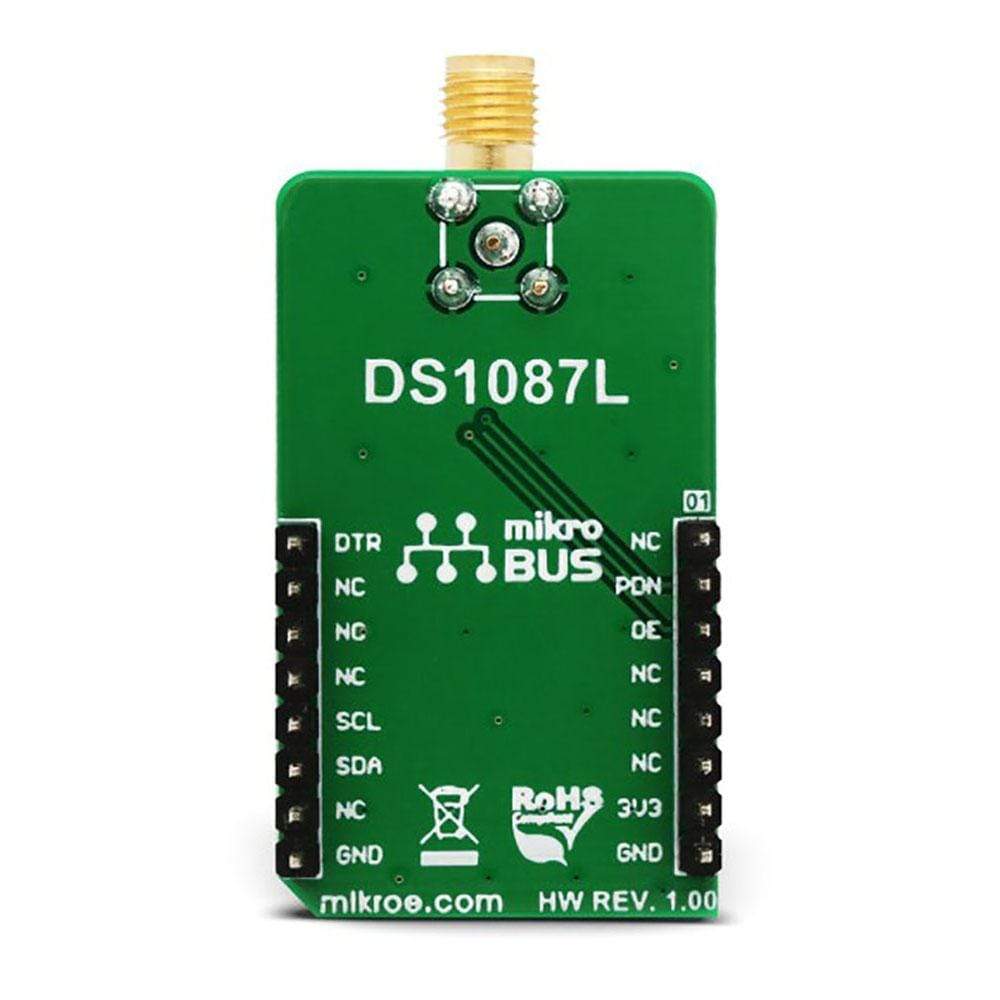
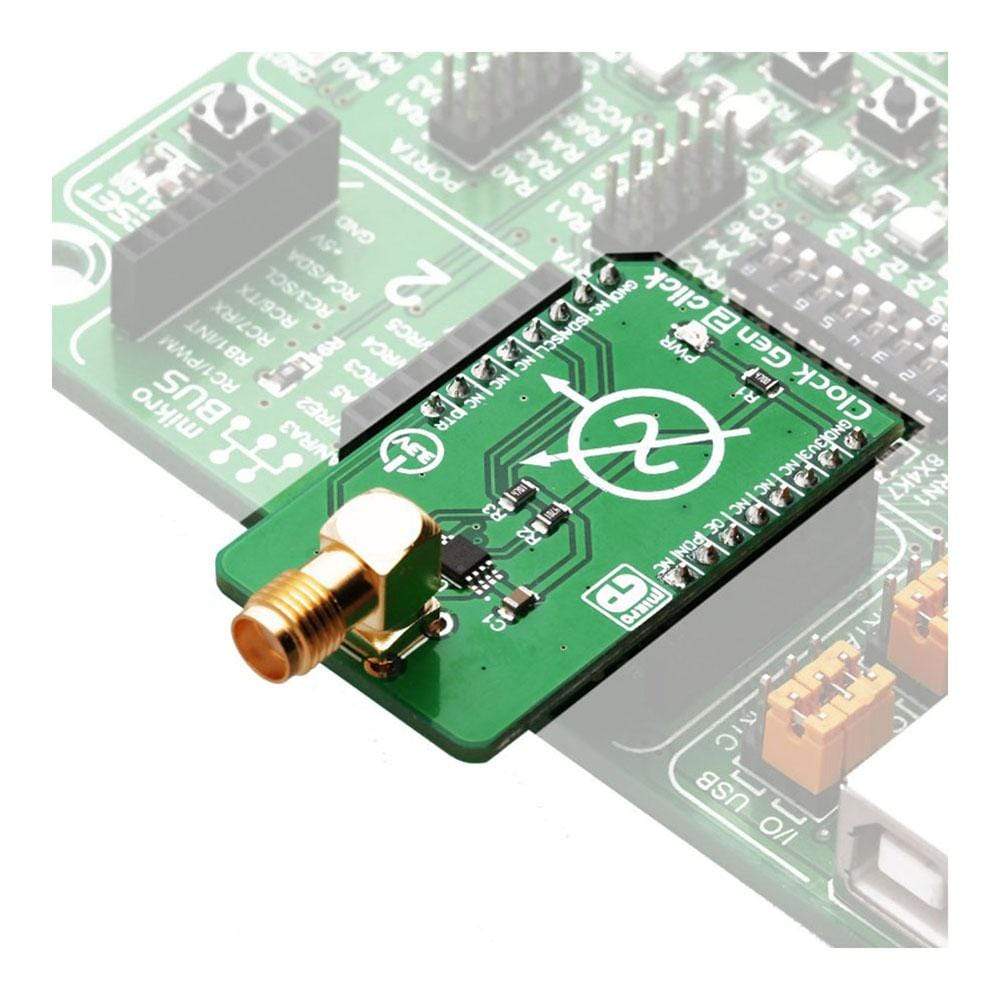
Overview
The Clock Gen 2 Click Board™ is an accurate square wave generator that can generate a clock signal in the range from 260kHz to 66.6MHz. It generates a square wave in the frequency of 66.6MHz, which is then processed by the prescaler, which can be set in the range from 20 up to 28. This allows the full frequency range to be achieved on the output.
The DS1087L, a 3.3V spread-spectrum Econ Oscillator, used on the Clock Gen 2 Click Board™, offers the spread-spectrum function, which can be controlled via the IC pin and register setting. This allows reduced EMI, especially on the high frequencies. Finally, the DS1087L offers a NV memory (EEPROM), which is used for storing the values of the configuration registers.
Downloads
Das Clock Gen 2 Click Board™ ist ein präziser Rechteckwellengenerator, der ein Taktsignal im Bereich von 260 kHz bis 66,6 MHz erzeugen kann. Es erzeugt eine Rechteckwelle mit der Frequenz von 66,6 MHz, die dann vom Prescaler verarbeitet wird, der im Bereich von 20 bis 28 eingestellt werden kann. Dadurch kann der volle Frequenzbereich am Ausgang erreicht werden.
Der DS1087L, ein 3,3-V-Spread-Spectrum-Econ-Oszillator, der auf dem Clock Gen 2 Click Board™ verwendet wird, bietet die Spread-Spectrum-Funktion, die über den IC-Pin und die Registereinstellung gesteuert werden kann. Dies ermöglicht eine Reduzierung der elektromagnetischen Störungen, insbesondere bei hohen Frequenzen. Schließlich bietet der DS1087L einen NV-Speicher (EEPROM), der zum Speichern der Werte der Konfigurationsregister verwendet wird.
| General Information | |
|---|---|
Part Number (SKU) |
MIKROE-3076
|
Manufacturer |
|
| Physical and Mechanical | |
Weight |
0.021 kg
|
| Other | |
Country of Origin |
|
HS Code Customs Tariff code
|
|
EAN |
8606018713202
|
Warranty |
|
Frequently Asked Questions
Have a Question?
Be the first to ask a question about this.

